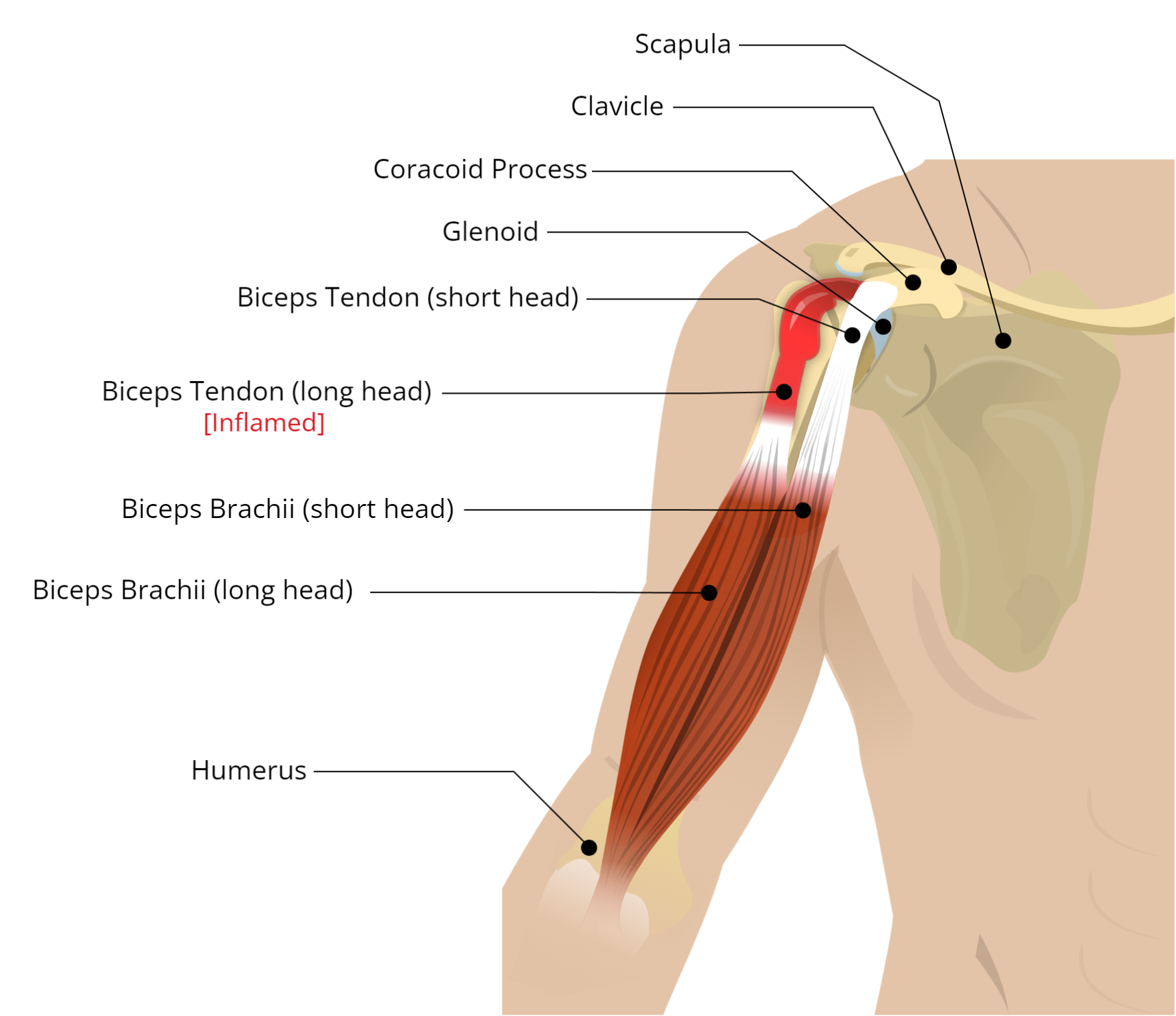Biceps Tendinopathy
We’ve all heard of the biceps, a.k.a. our ‘guns’, but what is a tendinopathy? First, we need to know what the role of a tendon is. A tendon is the portion of the muscle that attaches the muscle belly to the bone. They take on a lot of the tensile and loading forces that happen when the muscles are contracted. A tendinopathy is a broad term for swelling and pain caused by excessive loading above the tendon’s usual capacity. This often happens when there is a sudden increase in use of the muscle or volume of activity. Tendinopathies can start off inflamed, and progress to become degenerative if left untreated.
What is a biceps tendinopathy?
Biceps tendinopathy refers to a non-traumatic gradual presence of shoulder pain. Specifically, pain in the front of the shoulder, often associated with but not limited to overhead sports such as baseball, volleyball, swimming, and gymnastics. Biceps tendinopathies are very commonly accompanied by other rotator cuff conditions, and are rarely diagnosed as an isolated condition.
Illustration depicting an inflamed Biceps Tendon (long head) causing Biceps Tendinopathy
What is happening in the shoulder with biceps tendinopathy?
The biceps brachii muscle that we all like to flex at the gym has two heads that attach to different parts of the shoulder region. The short head attaches to the coracoid process and the long head runs along a groove on the humerus called the bicipital groove. The long head attaches to the top of the shoulder joint and is the injured tendon we refer to in biceps tendinopathy.
When we overuse this muscle or participate in lots of overhead shoulder movements, the long head of the biceps tendon swells and becomes irritated in the confined space within the shoulder joint. This can lead to pain down the front of the arm from the shoulder. As it progresses, the tendon thickens and blood flow to the area starts to become restricted. If left untreated, this can lead to degenerative changes and scarring that compromises movement of the tendon, causing further pain and restriction. In severe cases, the tendon could even rupture.
Some risk factors associated with biceps tendinopathy include a history of overhead sports as mentioned earlier, or a history of manual and physical labour occupations with repetitive overhead shoulder movements.
Symptoms to look out for include:
- Pain that worsens with overhead activity
- Pain that travels down the front of the arm from the shoulder
- Pain in the front of the shoulder while at rest or at night
- Weakness of the shoulder muscles
- Pain with bending the elbow and/or turning the palm to face upwards
- Pain with shoulder movements
If you find yourself experiencing pain in your shoulder, meet with a physiotherapist to find out what may be the source of this pain, and steps to take towards your recovery. Currently exhibiting symptoms and want to see a physiotherapist for an assessment? Book now!
Blog Author
This blog was written by our Physiotherapy Student, Christine!
She is completing her Master of Physiotherapy degree at the University of Western Ontario, and just completed her placement at Break Free the Summer of 2022. She is from Markham, Ontario, received her Honours Bachelor of Science degree in Kinesiology at McMaster University, and has just begun her final year at Western!




